
The first in a series of blogs that will help educate on what is most important about Bluetooth 5 and take you deeper into the details of how it works and how you can benefit most from using it.
Taking Bluetooth further, faster
Bluetooth 5 has been with us for a few months now and is proving to be as exciting in the world of Bluetooth developers we talk to as it was to us when the specification was proposed. With its core additions of considerably longer range (x4), doubled throughput and improved broadcasting bandwidth, it is no exaggeration to say this is the biggest thing to happen to Bluetooth since the introduction of low energy in v4.0. Five is going to take Bluetooth, quite literally, to places it has not been before.
Bluetooth 5 ready. Really?
When it comes to planning development for Bluetooth 5 and using its exciting new features there are some considerations to bear in mind to avoid disappointment. Bluetooth devices are fit for declaration of readiness for a Bluetooth specification by ensuring it fulfills the associated errata for that specification. This is in accordance with the Bluetooth SIG rules, so fair enough.
- Moreover, some manufacturers will actually say that -
The Nordic approach to Bluetooth 5 supporting products
However, we at Nordic do not take that approach, we believe more often is the case that almost anyone wanting to develop for Bluetooth 5 will wish to use one or more of the new additions that came with that specification. For Bluetooth 5 it is highly likely they belong to one or more of these three major advancements:
- 2Mbs for higher throughput and/or energy saving
- 500/125kbs modes for considerably increased range (x4)
- Advertising extensions for increased broadcast capacity (x8)
We suggest if you want to develop products for Bluetooth 5, quickly check out that the devices you may be considering do actually support the features you are looking for and are not just claiming Bluetooth 5 based on fulfilling the errata, otherwise there is the risk of wasted time and disappointment.
The nRF52 series. Real Bluetooth 5 solutions
The nRF52 series are been designed with Bluetooth 5 in mind. They offer support for the new and useful features introduced in Bluetooth 5. nRF52 series Bluetooth 5 support is illustrated in fig 1.
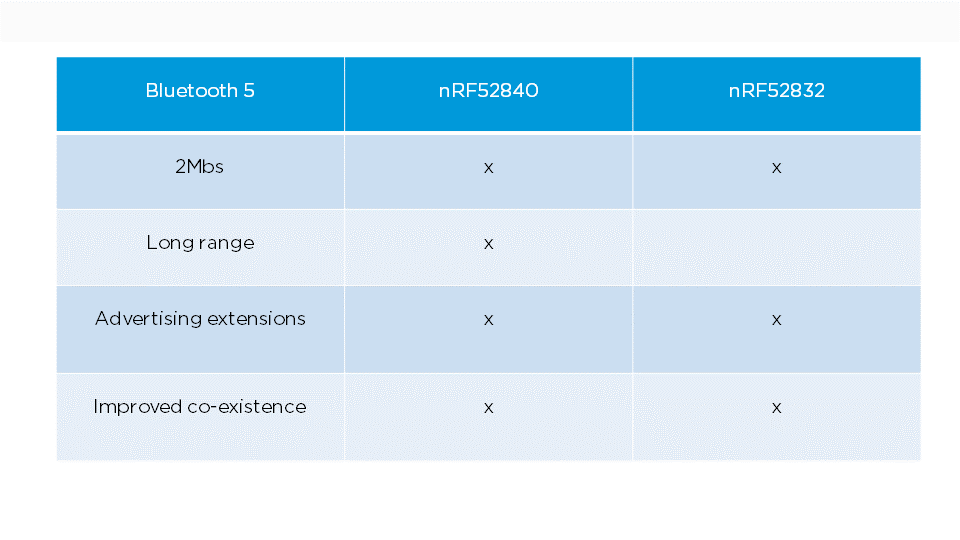
Fig 1. Bluetooth 5 support with nRF52 series SoCs
nRF52840 packs a real punch for indoor applications
The nRF52840 supports all three of the main Bluetooth 5 features in addition to 802.15.4 support. Together with the increased sensitivity of LE Coding, it has a max output power of +8dBm . This brings the total link budget to 111 dB giving Bluetooth 5 and the nRF52840 real reach for indoor applications. With 6dB equating to a theoretical doubling of range in RF systems, we see from previous typical link budgets of 96dB using 1Mbs at 0dBm, we have a 15 dB increase which can yield up to four times the range seen previously.
High throughput mode, more data, less energy
The new high throughput mode doubles the on-air data rate of Bluetooth low energy from 1Mbps to 2Mbps . With Bluetooth 4.2 significant increases in net data throughput became possible and approximately 700kbs of that on-air traffic could be useful data for your applications. These improvements came about through extension of maximum packet sizes and other improvements in the data/overhead ratio. Bluetooth 5 incorporates those packet extension features of Bluetooth 4.2 and by doubling the on-air transfer speed, the possible net data throughput is doubled, to around 1400kbs. The advancement in data throughput as Bluetooth low energy has evolved is illustrated in fig 2.
Fig 2. Evolution of BLE data throughput
A significant benefit of moving to 2Mbs is in addition to opening up new application possibilities, significant energy savings become an option. Assuming both sides of the link support 2Mbs mode, you can do whatever it is you do twice as fast as before on-air. Logically this equates to being on air half as long, which means using half the RF TX energy on average. Co-existence is likely to be improved also, due to less time present on air meaning reduced risk of collision with other communicating devices. This is also likely even more beneficial over time as many devices switch to using 2Mbs mode for their communication activity .
Long-range mode - A PHY evolution with more power options, and better sensitivity
The PHY layer has undergone its biggest change since the introduction of Bluetooth low energy in Bluetooth v4.0. Up until now 1Mbs (at up to a maximum output power of +10dBm) was the singular on-air data-rate for Bluetooth low energy. The stated goals were longer range through better sensitivity and/or higher peak output power, but with an eye on maintaining or reducing average power. For Bluetooth to become a viable competing technology within living environments (Smart Home/Smart Office etc.) it needed to be as good, or better, than comparative 802.15.4 solutions.
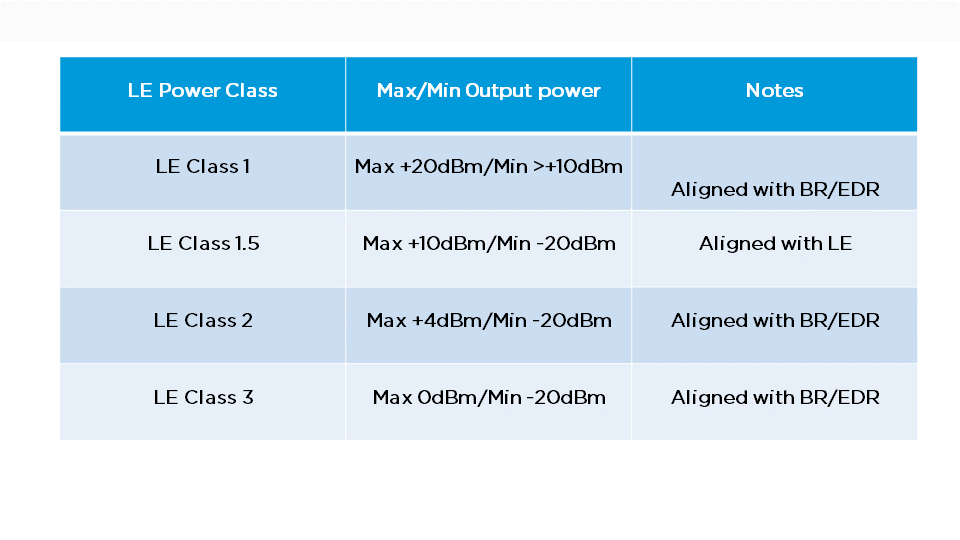
Fig 3. BLE power classes in Bluetooth 5
However, increased power in any RF system will typically bring some greater range, but with a power consumption trade-off. Ideally, we would like to achieve greater range but not have to rely solely on more horsepower, which might mean larger batteries with greater peak load capacity.
The most interesting aspect of the PHY changes in Bluetooth 5 are the techniques for improving sensitivity, this is termed ‘LE Coded’. Typically in Bluetooth low energy the packet headers and payloads are un-coded, meaning one modulated symbol = 1 bit.
Fig 4. Illustrates the use of coded schemes and different modulation characteristics between high speed BLE and standard and long range (LE Coded).
Fig 4. BLE coding and modulation schemes
For 1Mbs and 2Mbs this remains the case, however for the longer range options (LE coded) of 500kbs and 125kbs, this changes. As can be seen in fig 4. The payloads have multiple symbols for each bit, S = 2 for 500kbs and S = 8 for 125kbs (where S is the symbol/bit rate), this in essence means more symbols per bit allows more tolerance with a poor signal to noise ratio, and still provide a recoverable data stream. In short this allows a receiver to correct bit errors on the receiving side of a communication link.
This process happens entirely in hardware and is transparent to the developer. The required data rate is chosen and packets arrive and are delivered by the SoftDevice to the application in the same way regardless of on-air data rate. Fig 5 shows the system blocks for data processing for uncoded and coded PHY on the TX and RX sides.
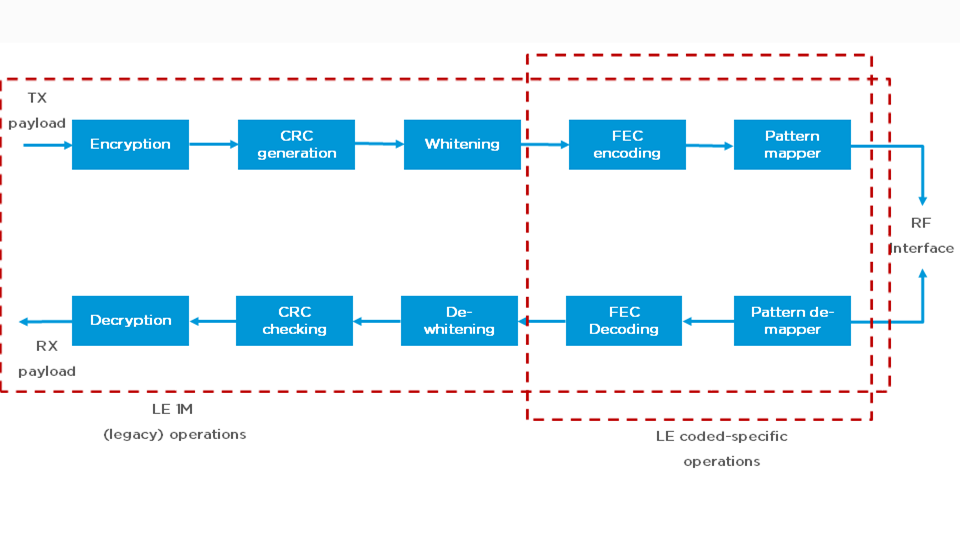
Fig 5. System payload processing for Uncoded and LE Coded PHYs
The coding process happens in two stages first is the Forward Error Correction (FEC) and then a pattern mapper maps a bit code to the input bits. The results is a spreading of the data that allows for data recovery using Forward Error Correction (FEC) should bit errors occur.
The result of using this FEC and pattern mapping is the improved ability to recover the bit stream a received on-air signal in conditions where the Signal-to-Noise Ratio (SNR) is reduced to a level that without the use of LE coding would make data recovery impossible, this is how the better sensitivity is achieved.
Do I use 125Kbps or 500kbps?
Here’s a question we often hear. Of course you will need to assess the needs of your application before deciding, but here are some quick hints. 500kbs will give approx. twice the range of standard 1Mbs, 125kbs will give twice the range of 500kbs. The bit time on air will change also, getting longer from 1Mbs to 500kbs and then longer still to 125kbs. So, 500kbs may give you the extra range you want and doesn’t spend as long on air as 125kbs, thus reducing collision cases with other devices and consuming less power.
However if we look at the packet structure when using LE Coded it can be seen that a significant portion of the packet, preamble address, coding is actually at the 125kbs all the time, even when selecting 500kbs which happens in the 1 bit CI field of the packet.
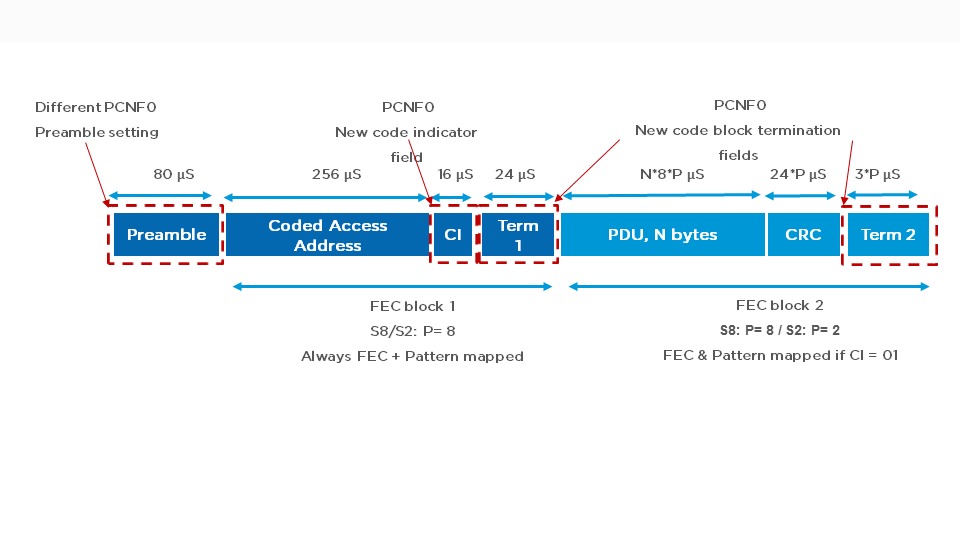
Fig 6. Packet structure with LE coding
We can see that for quite simple sensor/actuator operations of, for example, 4 to 8 bytes, we don’t save that much at 500kbs over 125kbs in terms of power or collision avoidance, but we sacrifice all that extra range potential. It is only the 2 to 6 bytes and two following fields CRC and that are read at 500kbs, everything else, the majority, is at 125kbs anyway.
So, the longer range takeaway?
- For simple sensor/actuator operations, probably go 125kbs, get that extra range!
- Larger data transactions of tens of bytes or more, use 500kbs and get its benefits
Fit for the job
As mentioned with the considerable increase in sensitivity and range a trade-off takes place in terms of maximum data throughput. We get up to 4 times the range but at an eighth of the on air rate. 125kbs is however clearly enough throughput for the intended applications, which are largely sensing and actuating functions such as temperature monitor and control, control of lights etc. These applications also typically have long duty cycles frequently in the minutes or hours timescale. Therefore 125kbs is easily enough to handle such applications.
There are different schools of thought as to where the biggest impact of long range Bluetooth will be, and which markets will gain most from its benefits. What long range now makes possible is hundreds and even over one thousand meters of line of sight range potential.
This has the possibility to impact the world of outdoor remote controlled equipment and gadgets, think possibilities with drones and also remotes associated with industrial plant perhaps office sun-blinds or a window cleaning gantry. Agriculture also has possibilities in automated irrigation for example.
However, it is probably within homes and working spaces where the biggest possibilities are. Of course, in these environments we have walls, windows, doors and solid objects that all diminish an RF signal’s ability to propagate, however initial tests with Bluetooth 5 show it has the ability to cover much of a typical home in a single hop using long range mode.
A quick word on Link budgets and propagation characteristics
We know that Bluetooth 5 long range makes Bluetooth a genuine contender for in-building applications with its extra range. What I think will be interesting here is an eagerness amongst Bluetooth developers to investigate further some of the theory and practicalities associated with 2.4GHz RF propagation characteristics. We will deal with that in more depth in another blog to get you up to speed.
The reason for this interest will likely be that to date Bluetooth has been a relatively short-range technology. Most of the applications we see operate within 10 meters of each other and are typically in the same space. The only major obstacle usually being the human body (although that is a considerable obstacle at 2.4GHz). This means the range desired was usually attainable and during development some empirical testing would occur, performance would be acceptable, and the product would ship.
With indoor whole-home coverage type applications, products have the challenge of overcoming obstacles such as walls, doors, windows etc. and they need to be considered. The testing we have done with Bluetooth 5 show it works favorably and acceptably covers a typical house, but again, what do you decide is typical?
Empirical testing will always be a part of wireless product development, regardless of technology. With Bluetooth 5 long range there are some formulas such as the Friis equation, and typical absorption characteristics that can be helpful to consider at the outset so you can set realistic goals.
- Just a note on this, and as said we will cover this in depth in a later blog very soon -
Increased broadcast capacity with Advertising Extensions
The third significant improvement that comes with Bluetooth 5 is increased broadcast capacity compared to previously (x8). These improvements will have a significant impact in the world of beacons and will expand the range of use cases for them.
With longer packets now possible and the option of LE coding it is possible that advertising channels could become saturated with traffic. This feature allows for advertising data with small packets (equal to or less than 31 bytes) to occur normally on the 3 advertising channels. When using longer packets (up to 255 bytes) a new non-advertising channel is negotiated and the larger data packet will occur on this non-advertising channel, this is shown in fig 7.
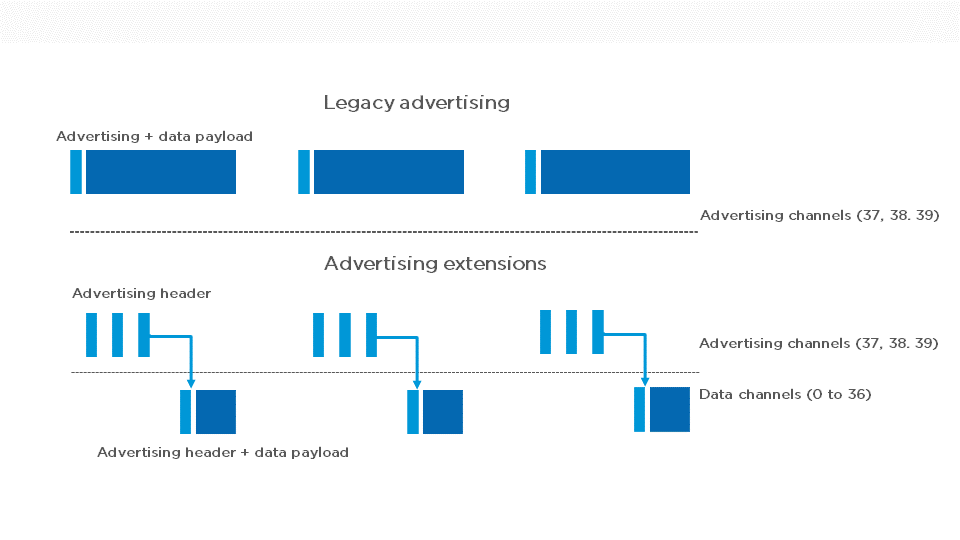
Fig 7. Legacy advertising and advertising extensions
This change in the nature of advertising and the use of non-advertising channels for data payloads means some synchronization is also necessary so both TX and RX know where to go to exchange data. Advertising Extensions defines a method for sending periodic advertisements (PA) on a deterministic interval to support true connectionless broadcast. PA uses a channel selection algorithm and intervals in the same way as a connection does.
- Much more on Advertising Extensions in a future blog -
Developing for Bluetooth 5
As a developer, you probably want to know how much more work is involved in taking advantage of the new features using the nRF52840 and the nRF52832. The answer is very little, and if you have had experience with Bluetooth low energy development on recent SoftDevices from Nordic, you will be in very familiar territory. Typical applications will make a call to the SoftDevice and set up the required Data rate mode, from there the device will be operating using the mode selected. Of course, other latency considerations need to be taken into account in your application, these will reduce if you are using faster data rates and will increase if you are using slower ones.
It will depend on who you are talking to
There are clearly great improvements in Bluetooth 5. But it is also the case that there are dependencies on the underlying hardware capabilities of the radios involved. There are now four distinct data rates available. Clearly, these cannot be catered for in a firmware update alone, the device must be physically capable of these features at the PHY layer.
This will be an important consideration for developers whilst this technology is still in the early adoption phase. A huge amount of Bluetooth low energy products in the market have smartphones as a part of their use cases, it is important to remember Bluetooth 5 may take a time to propagate across a broad range of smartphones both in terms of hardware and firmware support.
nRF52 series ready for the Bluetooth of today and tomorrow
The nRF52840 and nRF52832 enable you design products today for Bluetooth 5 supporting as they do the respective PHY level features (nRF52832 for 2Mbs, nRF52840 all features). Therefore, you can release Bluetooth 5 ready products early and develop them in such a way as to take advantage of Bluetooth 5 when they encounter a peer device, such as a smartphone, that also supports Bluetooth 5.
This is where a prime benefit of the nRF52 series comes into play. They are flash-based SoCs. So you can release products with Bluetooth stacks that are in widespread use in the market with smartphones and other connectable devices. Right now that is Bluetooth v4.1 and v4.2.
Because the nRF52 series have a flash-based architecture and its native support for over the air firmware upgrades (OTA-DFU) you can put products into market to running Bluetooth 4.2 or 4.1 stacks (available from Nordic)and as and when Bluetooth 5 is more widespread in the smartphone market, release a firmware upgrade and seamlessly upgrade your products to Bluetooth 5 without fuss to the consumer.
So, the nRF52 series - Offering you the best of all worlds,so get designing for Bluetooth 5 now, we've got you covered.
- Stay tuned to Nordic Developer Zone for more upcoming blogs on the nuts and bolts of Bluetooth 5 with the nRF52 series SoCs -

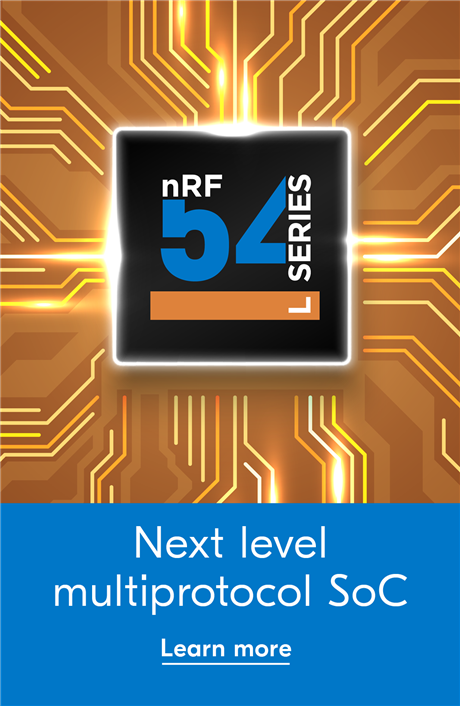
-

pickmyonlineclass
-
Cancel
-
Vote Up
0
Vote Down
-
-
Sign in to reply
-
More
-
Cancel
Comment-

pickmyonlineclass
-
Cancel
-
Vote Up
0
Vote Down
-
-
Sign in to reply
-
More
-
Cancel
Children